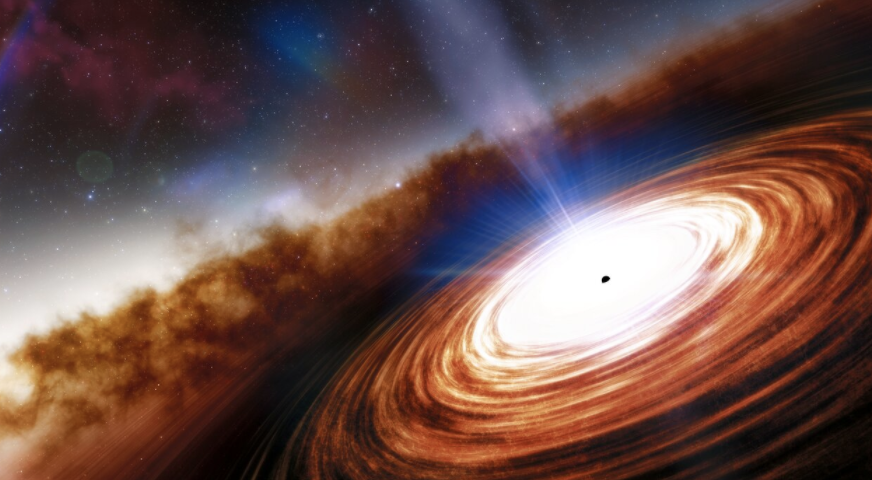Researchers from the University of Arizona have recently discovered the most distant quasar to date. This finding allows researchers to answer how black holes can possibly grow.
Quasars contain massive black holes and emit large amounts of energy. The most popular model for seed black holes is the remnants of the first-generation stars. The size of a seed black hole is less than a few hundred solar masses. They need billions of years to grow into a billion solar mass black hole by accreting surrounding materials.
Researchers Feige Wang and Jinyi Yang have been working on this research for a few years. They explained that the surprising part was not the discovery of this quasar itself, but what they had found from their survey. From their survey, they had discovered two 1.5 billion solar mass black holes at redshift 7.5. From previous surveys, they had learned that there are supermassive black holes in the early universe that require massive seed black holes.
According to Yang, a Strittmatter Fellow at the UA’s Steward Observatory, “the two new quasars hosting 1.5 billion and 1.6 billion solar mass black holes require the most massive seed black hole than any other quasars known before.”
Wang, a Hubble Fellow at the UA’s Steward Observatory, explained that by assuming that the quasar has been accreting at the maximum growth rate, it requires a seed black hole to be more massive than 10,000 solar masses, which are two orders of magnitude higher than that produced by the first-generation stars.
“In other words, it is impossible to grow such a big black hole within just a few hundred millions of years if the seed black hole was produced from the first-generation star,” Wang said.
The most challenging part of this project has been finding the most distant quasars. It is extremely difficult and the current success rate for finding these objects is around 1%. Wang explained that they had to observe a lot of targets in order to find one distant quasar.
Yang explained that there are many contaminants for high redshift quasar surveys. The main contaminants include stars in our Milky Way and early-type galaxies, which have a few thousand times higher density than high redshift quasars.
RELATED: The UA to lead NASA’s Aspera mission
“Towards higher redshift, the more distant universe, there will be more things we haven’t known,” Yang said.
A big part of their research is the telescope they use. In order to search for these high redshift quasars, they need photometric data from wide-field imaging surveys and then take spectroscopy. Yang explained that the wide-field imaging data is mainly from 2-4m class telescopes. For spectroscopy, they usually use 6-10m class telescopes.
With next-generation telescopes, they will be able to go to even higher redshift, find fainter quasars and improve the understanding of supermassive black holes and the early universe. Wang explained that the spatial density of the distant quasar is very low. They expect only a handful of luminous quasars exist at redshift beyond 7.5.
Another interesting part of their research was that the most distant quasar contains strong quasar-driven wind and intense star formation activity. Quasar wind has been known for a long time and the strongest wind has been thought to be powerful enough to impact the star formation in the whole host galaxy.
“For example, many theorists suggest that the relativistic quasar wind could stop the star-forming activity in the quasar host galaxy,” Wang explained.
They found on this quasar that the wind has a maximum speed close to 20% of the speed of light. According to Wang, the intense star formation activity means the host galaxy is growing fast.
“The existence of both relativistic quasar wind and intense star formation in the quasar host galaxy makes J0313-1806 an ideal lab for investigating how the quasar wind affects the star formation in the earliest massive galaxies,” Wang stated.
However, they will need a future space telescope to reveal more details. Their goal with their research is to build a large reionization-era quasar sample and to search for the most distant quasar. They also hope to use these quasars to investigate the early supermassive black holes, the galaxy and the young universe.
Follow Jillian Bartsch on Twitter









